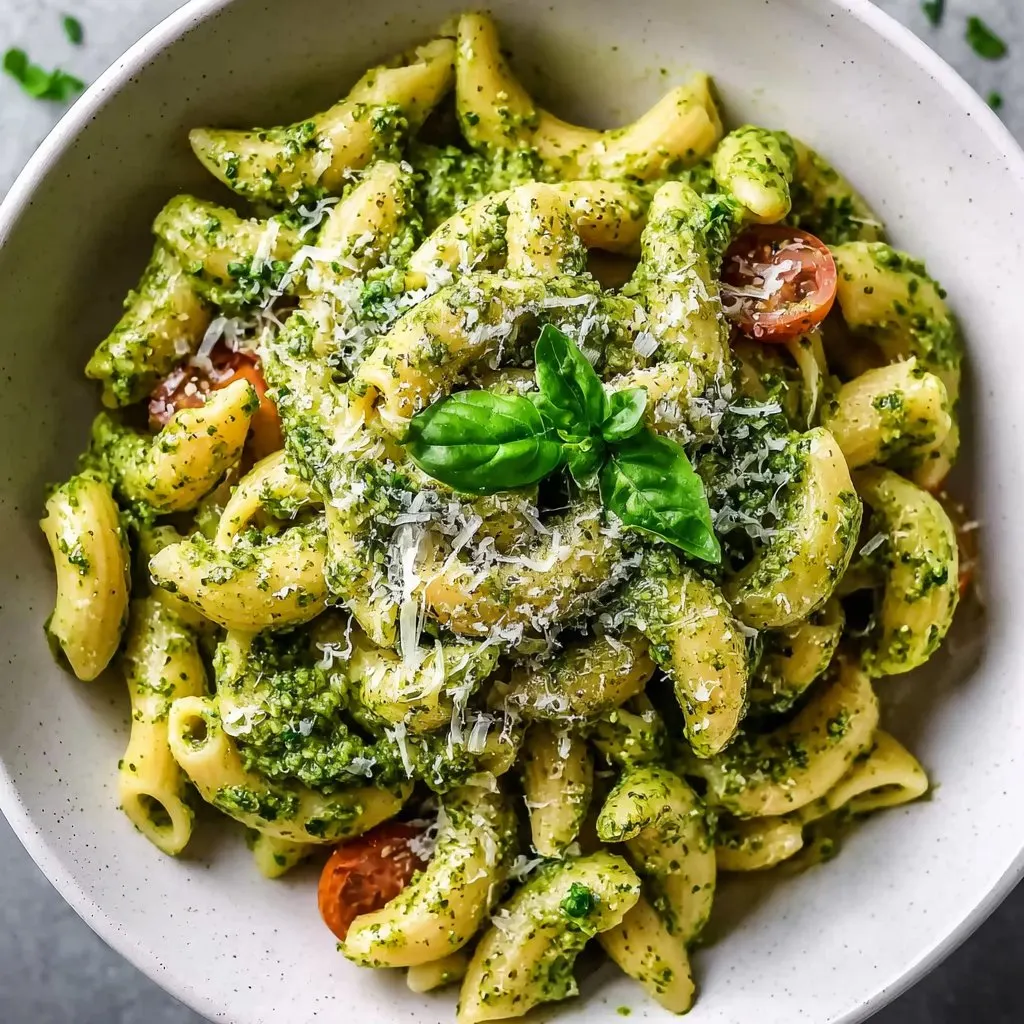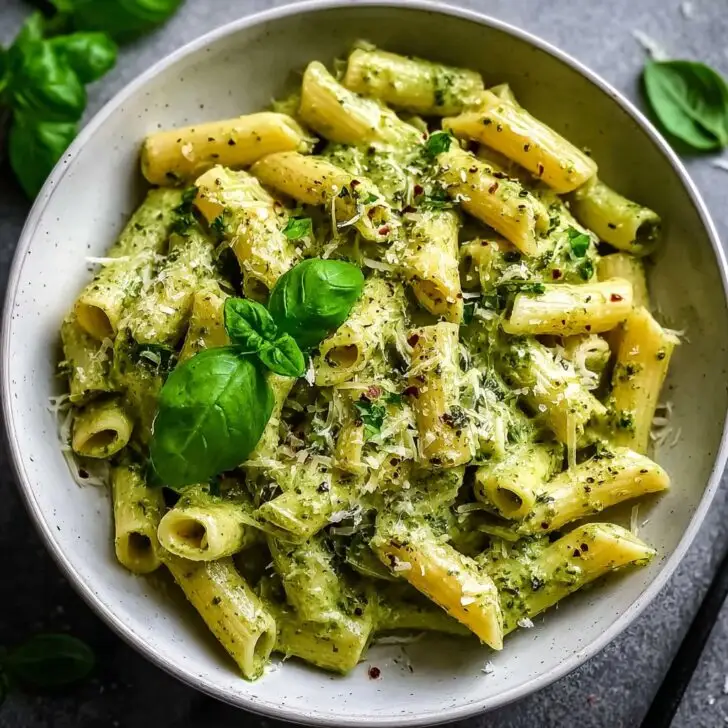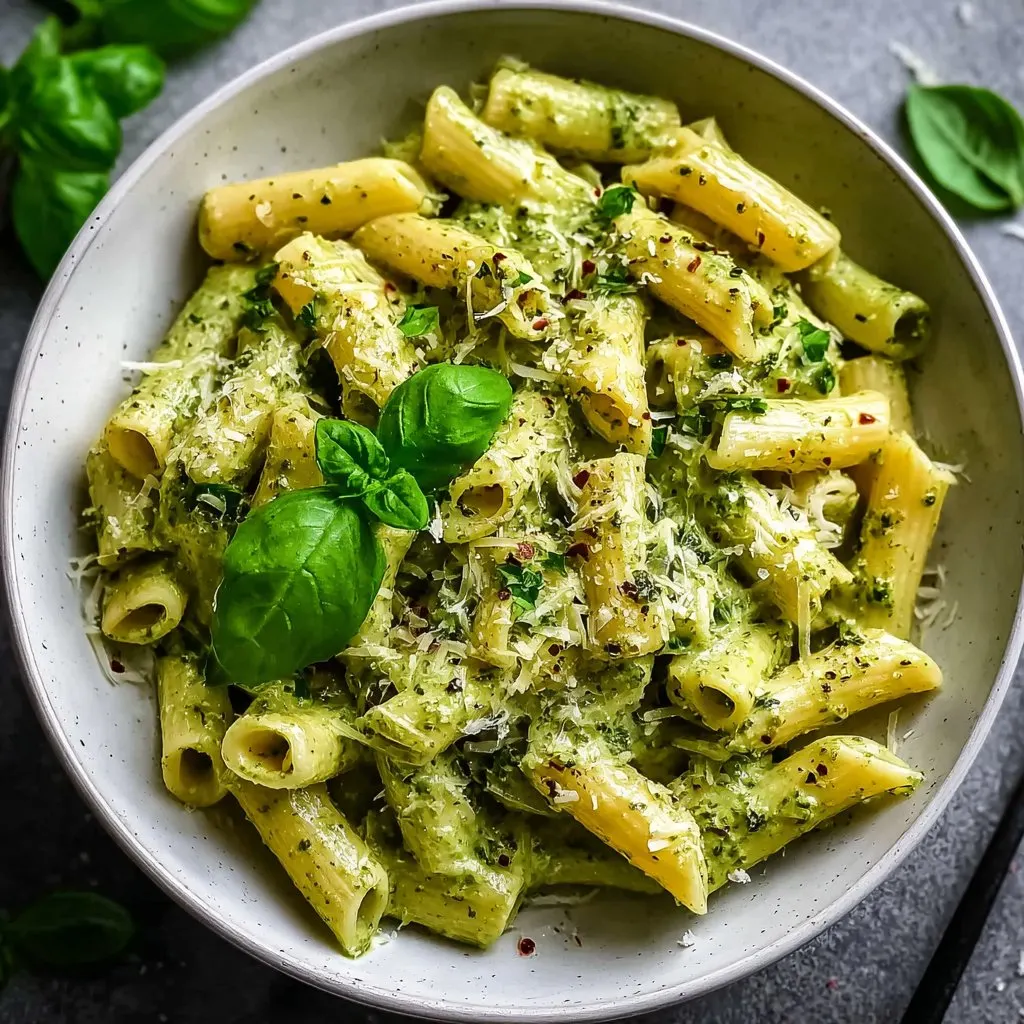Let’s Chat: Why Easy Creamy Pesto Pasta is My Hero
Okay, so let me set the scene: long Wednesday, fridge looking like a ghost town, and everyone's hungry (especially me). Enter my trusty easy creamy pesto pasta—the weeknight MVP. I think the first time I cobbled it together, it was just to avoid ordering takeaway again (no judgment, but my wallet did complain). Can I just say, I've never looked back? There's something almost magical about those handful-of-ingredients meals you throw together that accidentally become family legends. Oh, and honestly, it's a crowd-pleaser—even the kids, and that's some kind of miracle.
Slight digression: once, I tried to recreate an expensive restaurant pesto at home, but, well, this version is less posh and a heck of a lot faster (and doesn't leave me with a pile of washing up, which is worth its weight in gold, right?).
Why I Keep Making This (Even When I Should Maybe Branch Out)
I make this when I get home late (or frankly, when I just can’t be bothered to stare down a long recipe card). My family goes ridiculously wild for it—like, extra helpings every time. There’s something about that creamy-pesto combo. Also, it's ridiculously forgiving if your timing's a bit off (speaking from personal experience here; I've definitely left the pasta in a little too long, and nobody noticed). Sometimes the hardest part is not eating straight out of the saucepan. (Guilty, more than once. Sorry not sorry.)
The Messy, Honest Ingredients List
- Pasta: About 350g (a small box or just over ¾ of a big package). I usually grab fusilli or penne, but spaghetti does the trick too. When in a pinch, any shape will do. I've even used gnocchi—it works, kinda.
- Pesto: Half a jar (roughly 100g). Homemade, if you're feeling fancy... but honestly, store-bought is a weeknight lifesaver. My grandmother swore by Sacla, but whatever’s on offer is fine by me.
- Cream: ½ cup double cream or thickened cream. I once used crème fraîche instead; came out a bit tangier but still delish.
- Parmesan Cheese: Big handful grated (fresh or from the bag; the cheese snobs are probably rolling their eyes, but needs must).
- Salt + Pepper: To taste (I can never stop at just a pinch of pepper—it’s an actual weakness).
- Olive Oil (optional): Just a splash if you like a silkier sauce.
- Veg (optional): Spinach, frozen peas, or even a handful of broccoli works for sneaking greens. I’ve added sun-dried tomatoes—gives a nice zing!
- Protein (optional): Shredded rotisserie chicken, a few prawns, or nothing at all—make it your own.
How I Actually Make It: The Honest Directions
- Fill up a big saucepan with water, add a fat pinch of salt, and bring it to a boil. Toss in your pasta. Stir it so the bits don’t clump together—tried skipping this step once, had a pasta blob. Not fun.
- Cook pasta till just al dente—even a bit under, since it’ll keep cooking later. Usually 9–10 minutes, but I just taste a piece at 8 (no shame).
- Drain, but save about a mugful of that pasta water—never used to bother, but trust me, it helps the sauce later. It’s magic. (Seriously, try not to let the mug slip into the sink, I’ve done that and cursed myself more than once.)
- Chuck the drained pasta right back in the warm pan (less washing up!). Add pesto, cream, and a drizzle of olive oil if you’re using it. Stir, stir, stir! It looks a bit weird at first, kind of greenish and clumpy—but give it a minute.
- Add a splash of reserved pasta water if it seems dry—it loosens everything up beautifully. (I always end up adding more than I thought I would; kinda like watering a plant, just enough but not loads.)
- Toss in your cheese and any extras—spinach, peas, leftover roast chicken, whatever you've got or want. Stir until spinach wilts and cheese melts into everything. This is where I sneak the first taste. Sometimes... the only taste if nobody’s looking?
- Add salt and lots of black pepper. Mix again, taste, do a little happy dance in your kitchen. That’s it!
Stuff I’ve Learned (Usually the Hard Way)
- If you go overboard with cream, it ends up soupy—not what we want. Started off doing that, dialed it back.
- For real, always save that pasta water. It's like the secret handshake of good pasta sauce.
- Pesto burns easy if you heat it too much, so just warm it through at the end (don't stick the pan back on high heat—guilty as charged).
Experiments, For Better or the Other
- Veggie-packed: Broccoli is top notch, mushrooms go pretty well, but roasted red peppers sort of made the sauce taste odd. Wouldn’t do that again.
- Vegan: Did coconut cream instead of dairy cream and nutritional yeast instead of parmesan—actually not half bad, but missing that classic tang for me.
- Chili Flakes: Sprinkle a little in for heat. I sometimes regret it later (but in a good way).
If You Don’t Have the Gear
You don’t need anything fancy. Just a decent saucepan, a colander, a wooden spoon. No cheese grater? Use the bagged shredded stuff, or a knife (done it). Pasta water: any old mug will do for scooping—just not your favorite mug, in case you drop it in the sink (which, yeah, I’ve done).

Pasta Storage Rules that (Almost) Never Apply in My House
Supposedly, you can store leftovers in an airtight container in the fridge for up to two days. But honestly? This rarely makes it past lunch the next day. Pro tip: Reheat gently in a pan with a swoosh of milk to loosen it up.
How I Dish It Up (Literally)
I’m a bowls person. Always bowls. Top with a bit more parmesan, maybe a twisted crack of pepper. We sometimes have it with garlic bread (store-bought—don’t judge) and a green salad if I’m feeling fancy. My mate swears by a tiny squeeze of lemon on top. Not traditional, but try it once at least.
Lessons I’ve Learned the Silly Way
- Don’t try to use single cream instead of double; it makes the sauce thin and sad (ask me how I know).
- Give everything a good mix before you season. I used to throw salt on at the beginning—bad idea. It ends up too salty after the cheese goes in.
- Pasta timing really does make a difference—even one minute turns perfect to mush. I’ve had both, trust me.
Questions I’ve Actually Gotten About This Pasta (and Answers!)
- Can I make this dairy free?
- Yep! Try oat cream instead of double cream (like this recipe from BOSH!), and swap in a vegan pesto—works, just not quite as rich.
- How do I make my own pesto?
- Honestly, I just use this BBC Good Food basil pesto recipe if I’m up for it—great for when your basil plants go wild in the window box. Tastes literally like summer in a spoon.
- Can I freeze it?
- Technically yes, but reheated creamy pasta can go a bit grainy. If you must, add an extra splash of cream when warming up again.
- Why does my sauce split?
- I’ve had it happen if the pan’s too hot or not enough pasta water got added. Just be gentle—stir off the heat, let the sauce come together. And remember, it still tastes good if not picture perfect.
- Could I use chicken or shrimp?
- Totally! Shredded rotisserie chicken is the laziest upgrade, but even pan-fried shrimp works. Actually, one time I chopped up leftover sausages and it was... well, decent, but not my best idea.
Ingredients
- 12 oz (340 g) pasta (penne or fettuccine)
- 1 cup heavy cream
- ½ cup basil pesto (store-bought or homemade)
- ½ cup grated Parmesan cheese
- 1 tablespoon olive oil
- 2 cloves garlic, minced
- Salt and black pepper to taste
- Fresh basil leaves, for garnish
Instructions
-
1Cook the pasta according to package instructions in a large pot of salted boiling water until al dente. Drain and set aside.
-
2While the pasta is cooking, heat olive oil in a large skillet over medium heat. Add minced garlic and sauté for about 1 minute until fragrant.
-
3Pour in the heavy cream and bring to a gentle simmer. Stir in the basil pesto and mix well to combine.
-
4Add the cooked pasta and grated Parmesan cheese to the skillet. Toss until the pasta is well coated in the creamy pesto sauce.
-
5Season with salt and black pepper to taste. Serve immediately, garnished with fresh basil leaves and extra Parmesan if desired.
Approximate Information for One Serving
Nutrition Disclaimers
Number of total servings shown is approximate. Actual number of servings will depend on your preferred portion sizes.
Nutritional values shown are general guidelines and reflect information for 1 serving using the ingredients listed, not including any optional ingredients. Actual macros may vary slightly depending on specific brands and types of ingredients used.
To determine the weight of one serving, prepare the recipe as instructed. Weigh the finished recipe, then divide the weight of the finished recipe (not including the weight of the container the food is in) by the desired number of servings. Result will be the weight of one serving.
Did you make this recipe?
Please consider Pinning it!!


